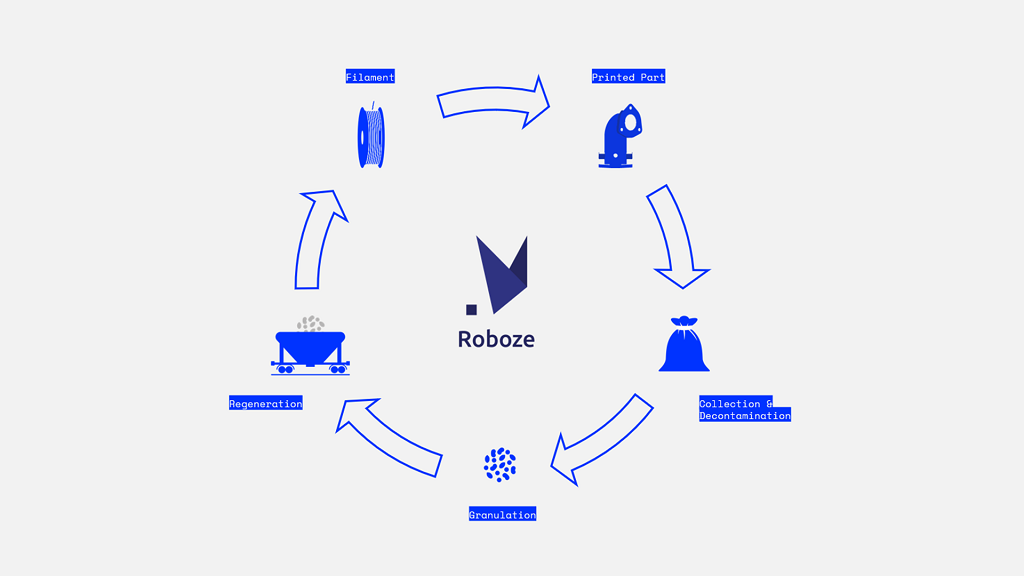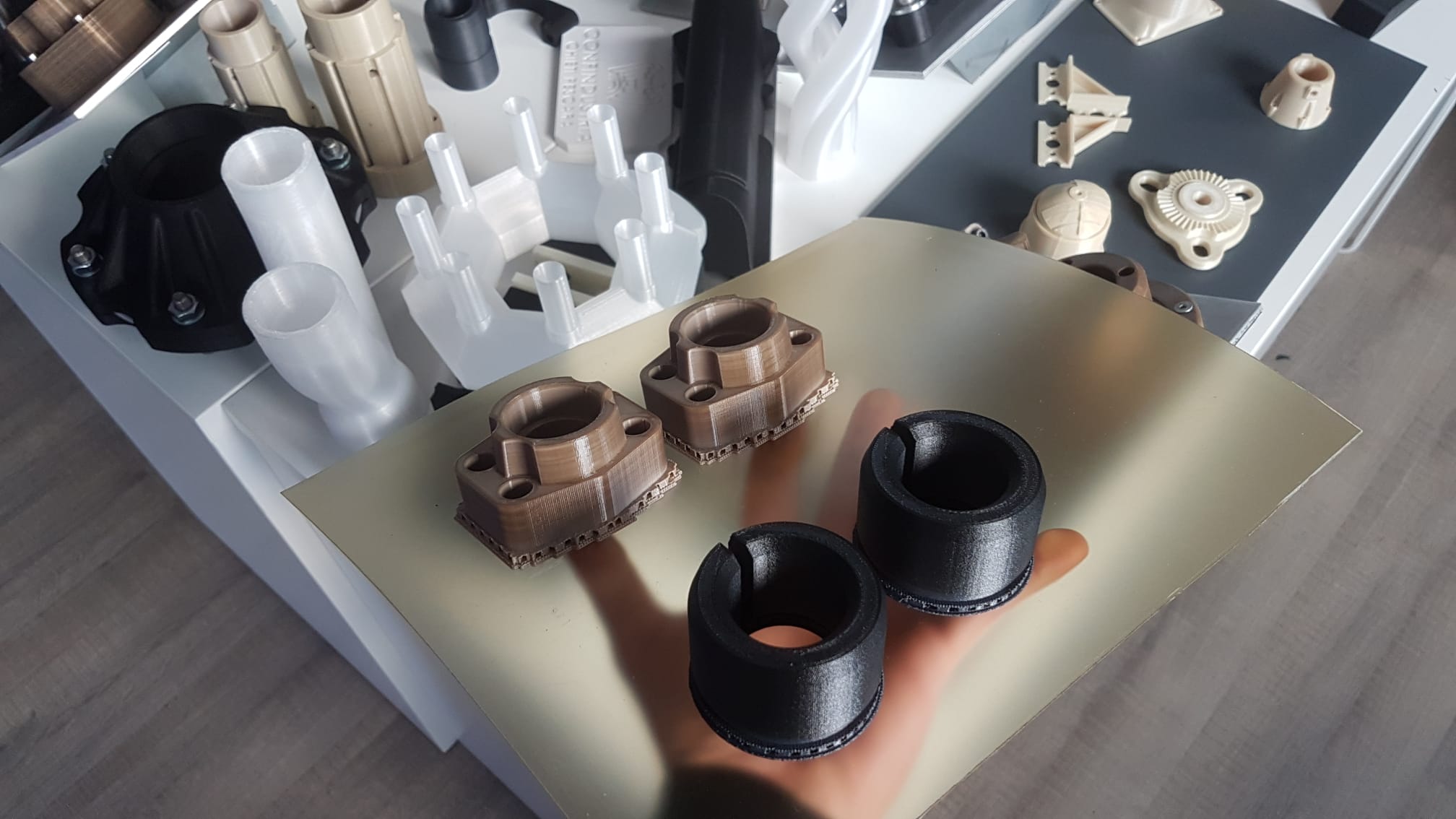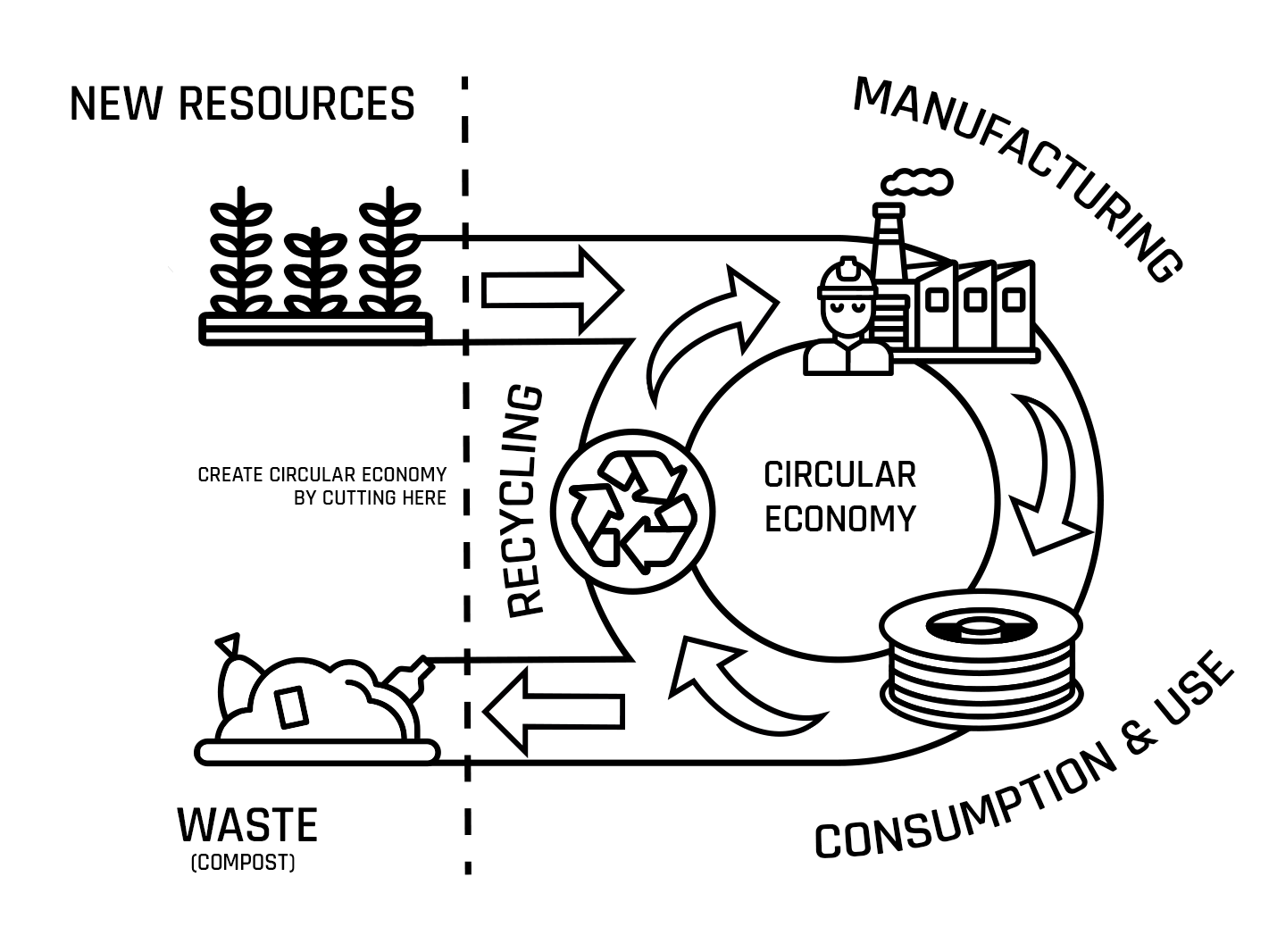The 2021 3D Printing Industry Awards shortlists are open for voting, have your say now. Make sure to tune in to the live stream of the event on our YouTube channel.
Roboze, a manufacturer of high-temperature industrial-grade 3D printers, has announced a new project that will allow customers to return their waste material and 3D printed parts at the end of their lifecycle to be processed into recycled, lower-cost 3D printing materials.
Beginning in January 2022, the circular economy project will seek to reduce the firm’s environmental impact while also democratizing its 3D printing technology by offering recycled material at a lower price point.
“We are working to refine the management of the entire supply chain, at any cost and with all the necessary efforts,” said Alessio Lorusso, Founder and CEO of Roboze. “3D printing technology can be one of the solutions to combat CO2 emissions, reducing transport and producing just in time and on-demand.
“But if we don’t take serious actions and continue to generate plastic waste, then we will only become part of the problem.”

Reducing environmental impact
In addition to manufacturing its high-temperature fused-filament-fabrication (FFF) 3D printers, Roboze is known for its development of ‘superpolymer’ ultra-rigid thermoplastics, such as carbon PA and carbon PEEK.
In April, the firm launched what it claimed to be the world’s first industrial automation system to bring customized superpolymer and composite 3D printing into the production workflow, called Roboze Automate. The automation system was developed to tackle long-standing challenges of standardization, process control and repeatability within 3D printing by streamlining the entire workflow.
The launch of Roboze Automate followed the roll-out of the company’s Roboze 3D Parts distributed 3D printing service last year. The service aims to help businesses reduce their costs through streamlining their supply chains, digitalizing their inventories, and producing components on-demand.
The aim of the Roboze 3D Parts Network is ultimately to bring production back to the point of use through a decentralized production model of micro-factories around the world. The network sees specialized 3D printing centers equipped with Roboze’s systems distributed across the globe that produce parts where and when they are needed, in order to reduce costs and times for end-users alongside decreasing transport and excess inventory in the warehouse.
Both Roboze Automate and the Roboze 3D Parts Network are contributing to reducing the environmental impact of both the company and its customers. The firm is looking to safeguard the environment by instigating a shift towards more responsible production models and energy-efficient processes that optimize the consumption of materials and energy.

Recovering and processing waste
The circular economy waste recovery project is the latest environmentally-minded initiative from Roboze. From January, the firm’s customers will be able to return waste Roboze material and 3D printed parts that have reached the end of their life cycle.
The waste material and printed parts will then be processed to produce a circular economy 3D printing material that customers will be able to receive at a much lower price than the original. Not only will this reduce the environmental impact of the firm’s 3D printing materials and parts, Roboze says, but it will also help to democratize its 3D printing technology by offering the recycled material at a lower price point to its customers.
“At Roboze, we don’t want to be part of the problem, but we want to be precursors of the solution,” said Lorusso. “Our circular economy model will create zero waste and will represent and deliver the solution.”

Circularity in 3D printing materials
The circular economy is a concept that seeks to make optimum use of resources in order to avoid waste. Numerous eco-friendly material launches, methods of repurposing waste, and projects seeking to reduce the environmental footprint of additive manufacturing have taken place over the past year, highlighting the many opportunities for improving sustainability within 3D printing.
The need for further research into how the circularity can be fully applied within the 3D printing sector has been recently highlighted by researchers from the Universidade NOVA de Lisboa (UNIDEMI), who claim greater open-source collaboration between industry partners could pave the way towards addressing the UN’s sustainability goals with additive manufacturing.
So far, there has been some progress already made to develop circular 3D printing materials. For instance, 3D printing filament vendor Reflow has engineered a range of eco-friendly ‘Seaglass’ translucent materials made from locally sourced plastics, while 3D printing materials producer Recreus has launched a 100 percent recycled flexible TPU filament made from waste material from the footwear sector.
Elsewhere, 3D printing filament producer Fillamentum’s 100 percent biodegradable NonOilen filament, recently showcased at Expo 2020 in Dubai, also adheres to the circular economy concept as it can be reused time and time again.
Circular 3D printing materials have also been engineered from more obscure sources, such as lignin from plant cell walls, landfill-destined waste, plastic water bottles, and even termite and boring insect waste.

Subscribe to the 3D Printing Industry newsletter for the latest news in additive manufacturing. You can also stay connected by following us on Twitter and liking us on Facebook.
Looking for a career in additive manufacturing? Visit 3D Printing Jobs for a selection of roles in the industry.
Subscribe to our YouTube channel for the latest 3D printing video shorts, reviews and webinar replays.
Featured image shows Roboze’s circular economy model. Image via Roboze.


